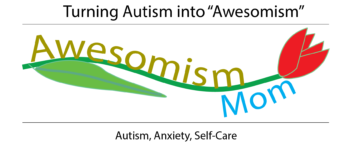This is a repost of guest blog! We originally posted this blog in September 2017. I thought it was a good blog to revisit. I have deep admiration for Action Behavior Centers… So having them as a guest blogger was a real honor for us. Hope you enjoy this best of blog… Don’t forget to watch for our Friday food blog!
We are honored to have as our guest blogger this week: Action Behavior Centers. Please check out their website at ActionBehavior.com
Autism Spectrum Disorder 101: 4 Revelations from Autism

Autism Spectrum Disorder 101: 4 Revelations from Autism Research
Just last week, the National Institutes of Health (NIH) announced some exciting news for the autism community – the agency has awarded the Autism Centers of Excellence (ACE) with nearly $100 million in research grants to fund large projects over the next five years.
These projects, aimed at building a better understanding of Autism Spectrum Disorder (ASD) and developing treatment options, will delve into some specific areas of interest, like how ASD differs in boys and girls, earlier ways to detect ASD, and how to improve interventions based on specific symptoms.
Over the last decade, autism research has come a long way. Action Behavior Centers, an ABA (applied behavior analysis) provider in Texas, created a new infographic highlighting some of the latest insights gained from autism studies. These studies, as well as some interesting outside research, are outlined below.
1. Many nonverbal children overcome severe language delays by age 8
A 2013 study uncovered some reassuring findings for families with nonverbal children on the spectrum. The study included 535 kids who were nonverbal at the age of 4, and found that the majority of these children achieved either phrase speech (70 percent) or fluent speech (47 percent) by age 8.
2. Girls and boys experience autism very differently
It’s well known that ASD is much more common amongst males – in fact, boys are nearly 5 times more likely to be diagnosed with autism than girls. Scientists are still trying to figure out the reason for this gender discrepancy, but recent research has shown that girls tend to show less repetitive and restrictive behaviors (RRBs) than boys. RRBs feed into some of the core signs of ASD, like hand flapping, excessively lining up objects, and trouble with transitions.
3. Parent-infant interactions can ease signs of autism later on
In a large study of over 1,400 children and adolescents with ASD, parents were split into one of two groups: one group was trained to interact with their infant’s facial expressions and gestures in a certain way, and the other was the control group. A 2017 follow-up study on these children found that those in the experimental group showed less severe autism signs by toddler age than those in the control group.
4. Technology is creating options for earlier diagnoses
With the rise of technology, researchers are discovering methods that could allow for earlier detection of ASD. Currently, autism can be reliably diagnosed around 18 months to 2 years of age. However, by using brain scans and artificial intelligence, a team of researchers was able to predict which 6-month old infants would be diagnosed with ASD with an impressive 96 percent accuracy. Another innovative option for early autism detection is rapid eye movement tests, according to a team of neuroscientists from New York

